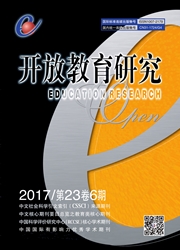

 中文摘要:
中文摘要:
随着移动技术的发展和智能手机、平板电脑等的普及,移动学习开始流行于全球并成为教育教学研究的热点。移动学习极大地满足了学习者的个性化学习需求,研究移动学习与翻转课堂教学模式的有效整合对推进教育信息化进程意义重大。微信是当前移动设备的热门应用程序之一,其丰富的功能可为移动学习的开展提供有力支持。本研究首先通过深入挖掘微信的教育功能,在分析翻转课堂技术需求的基础上,提出了基于微信的翻转课堂解决方案;而后以建构的模型为指导,在"大学基础英语"课程中开展微信支持的翻转课堂教学实践,并论证了微信支持的翻转课堂能有效提高学生的学习绩效;最后总结了微信支持的翻转课堂的优势和可能出现的问题,并提出在移动学习环境下开展翻转课堂的建议,以期为翻转课堂的开展提供参考。
 英文摘要:
英文摘要:
With the rapid development of mobile technology and the popularization of mobile equipments ( e. g. , smart phone and laptop) , Mobile learning has drawn global attention and becomes research highlights in the education field. With a learner-centred characteristic, mobile learning can fully support learners’ personalized learning needs. Thus, it is of great significance to study the effective integration strategies between mobile learning and the teaching model of Flipped Classroom, which potentially facilitates the process of educational informationization. WeChat, which includes three main functions:platform function, communication function, and social networking function, is one of the most popular applications on mobile devices. These multiple inclusive functions can provide strong support for the implementation and development of mobile learning. This empirical research on application of WeChat in flipped classroom contains the following four stages:Firstly, the study revealed potential pedagogical functions of WeChat and analyzed technical requirements of flipped classroom. Based on these statements, it puts forward a solution of a WeChat-assisted flipped classroom method. Secondly, under the direction of Constructivist Learning Theory and Systematic Instructional Theory, the researchers conducted a case study on existing flipped classroom models. And on this basis, a flipped classroom model supported by the Wechat platform has been constructed. Furthermore, guided by the constructed flipped classroom model, the authors carried out a teaching session on“Basic College English” class. The results of this study demonstrate that WeChat-assisted flipped classroom can effectively improve the students, learning performances. Last but not the least, this paper summarized advantages and limitations of the model, and provided suggestions on how to implement a “flipped classroom” model under mobile learning environment.
 同期刊论文项目
同期刊论文项目
 同项目期刊论文
同项目期刊论文
 期刊信息
期刊信息
